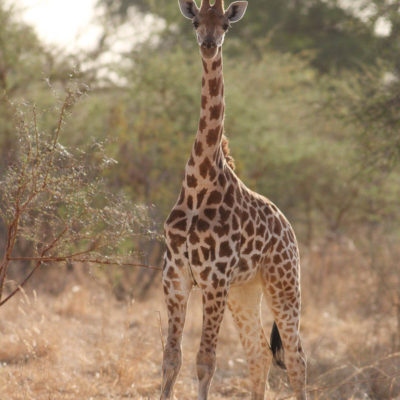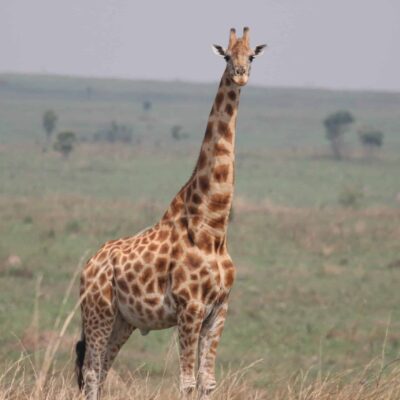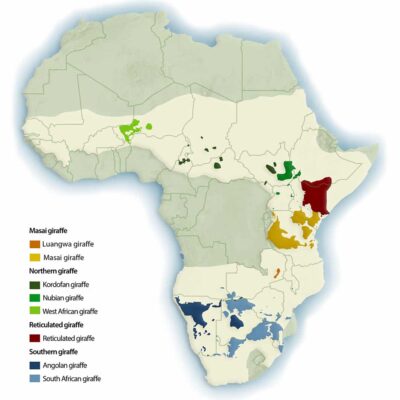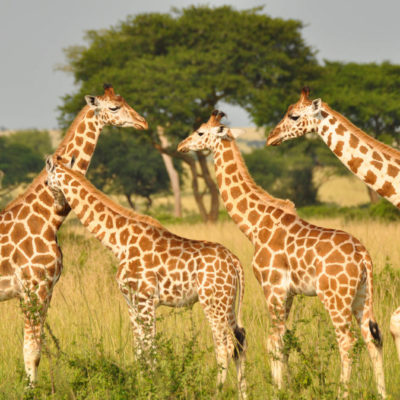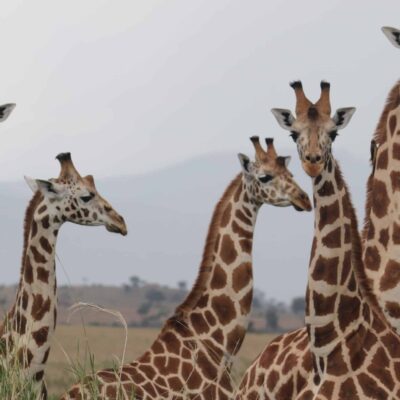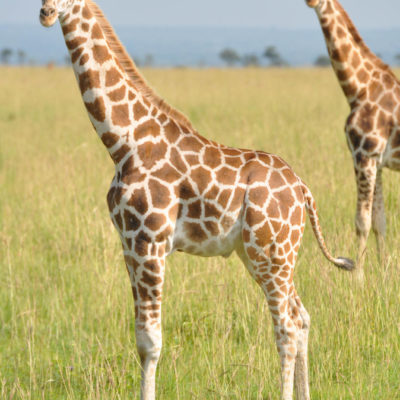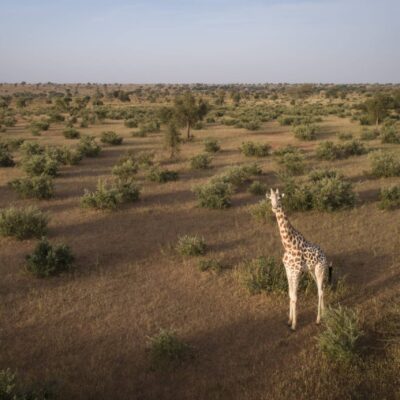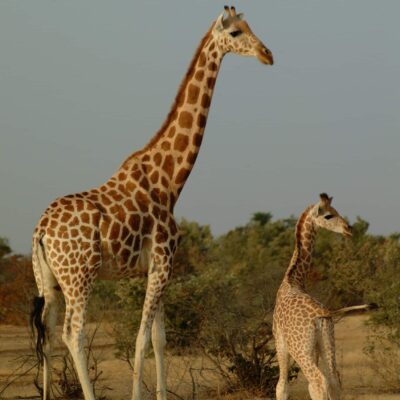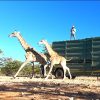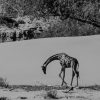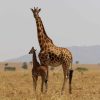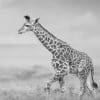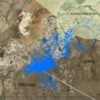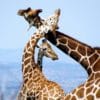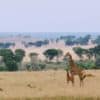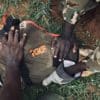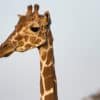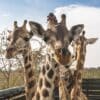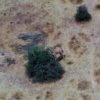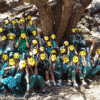Kordofan giraffe (G. c. antiquorum)
The Kordofan giraffe ranges in areas that experience high incidents of conflict and political instability: southern Chad, Central African Republic, northern Cameroon, northern Democratic Republic of Congo, and western South Sudan. It is estimated that approximately 2,300 individuals survive in these conflict-ridden countries. A decline of more than 80% in the last three and a half decades has resulted in their recent listing as Critically Endangered on the IUCN Red List.
The Kordofan giraffe’s patches are pale and irregular. Like all Northern giraffe subspecies, they have no markings on their lower legs.
Nubian giraffe (G. c. camelopardalis)
The Nubian giraffe is the nominate subspecies, which means that because it was the first specimen recorded, its Latin sub-specific name is the same as the original species described. The estimated number of Nubian giraffe is approximately 3,000 individuals, which includes the genetically identical formerly recognised Rothschild’s giraffe. At present, fewer than 175 occur in western Ethiopia, less than 450 in eastern South Sudan, approximately 700 in Kenya, and more than 1,800 in Uganda.
The majority of Nubian giraffe in Kenya live extralimitally (outside their natural range) as a result of efforts to establish viable populations throughout Kenya for conservation purposes.
Exact information about the precariously small and fragmented populations in Ethiopia and South Sudan is extremely difficult to ascertain, and their numbers are most likely lower due to increased poaching in the region. Based on the rate of decline, estimated at 95% in the last three and a half decades, Nubian giraffe were, for the first time, added to the IUCN Red List and listed as Critically Endangered. In 2010, the formerly known Rothschild’s subspecies was classified as Endangered, but based on strong conservation efforts of governments and partners, including GCF, it was downlisted to Near Threatened as populations and numbers have increased. Once the IUCN recognises the two subspecies as one, the conservation status on the IUCN Red List for Nubian giraffe will most likely remain Critically Endangered, indicating an urgent need for further conservation measures.
The Nubian giraffe’s patches are large, rectangular and chestnut-brown. The patches are surrounded by an off-white, creamy colour. There are no markings on their lower legs, a distinct feature of all Northern giraffe.
West African giraffe (G. c. peralta)
At the beginning of the 20th century the West African giraffe were widely distributed, from Nigeria to Senegal, but by the mid-1990s only 49 individuals remained in the whole of West Africa. These few survivors are now formally protected by the Niger government and their numbers have risen to more than 600 individuals. However, their future is still of great concern as they predominantly live in an isolated pocket (the Giraffe Zone) east of the capital Niamey and share their living space with local villagers. No other large wild mammals occur in this area, and habitat loss and destruction are increasing. In 2018, GCF together with the Government of Niger translocated eight West African giraffe to the Gadabedji Biosphere Reserve to establish a new satellite giraffe population in order to assist the population’s growth in number and range. In 2008, the West African giraffe was listed as Endangered on the IUCN Red List; however, in 2018 it was downlisted to Vulnerable based on increasing numbers and their conservation success story.
The West African giraffe is noticeably light in appearance. Their patches are rectangular and tan coloured and broadly surrounded by a creamy colour. There are no markings on their lower legs.

